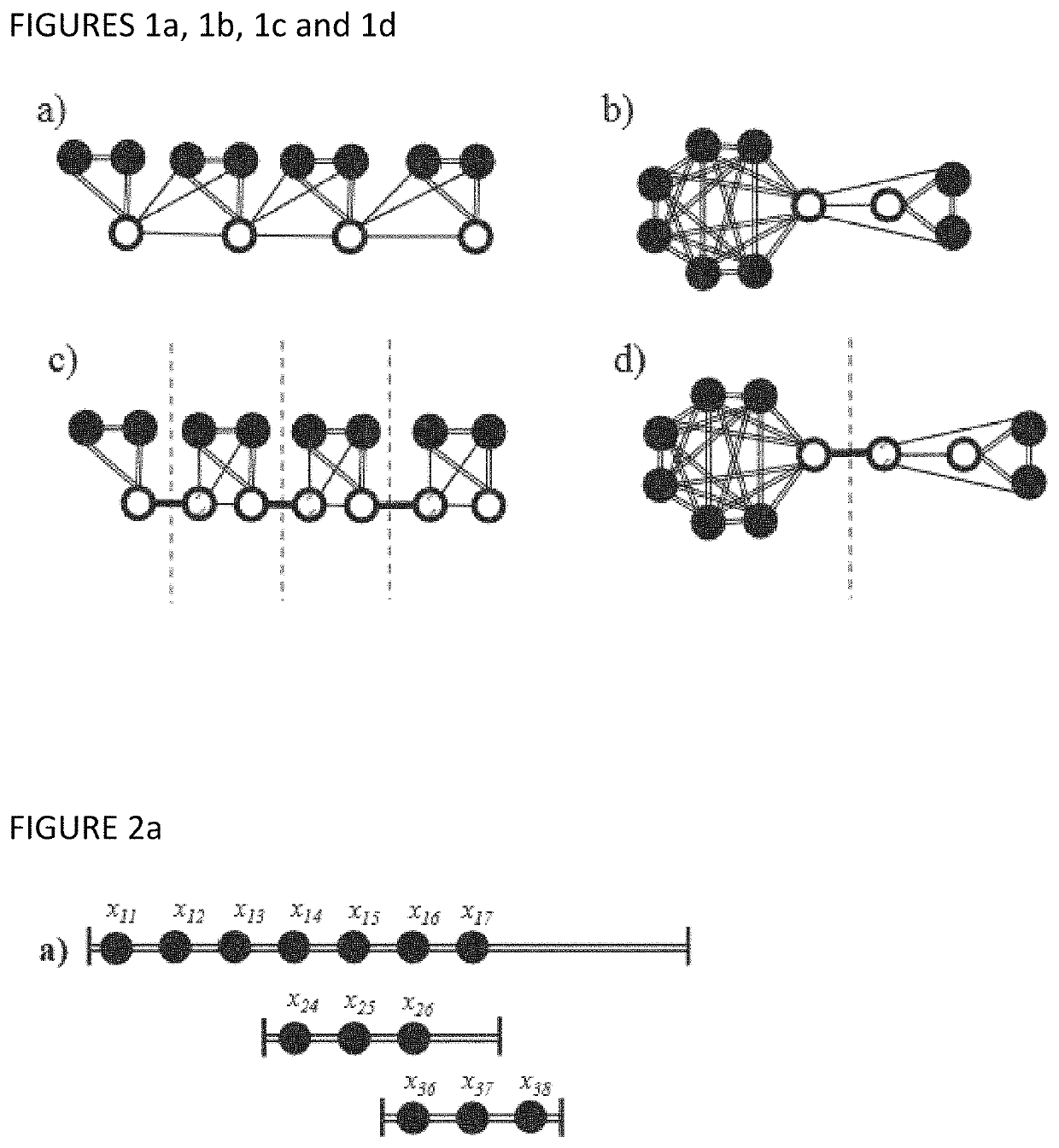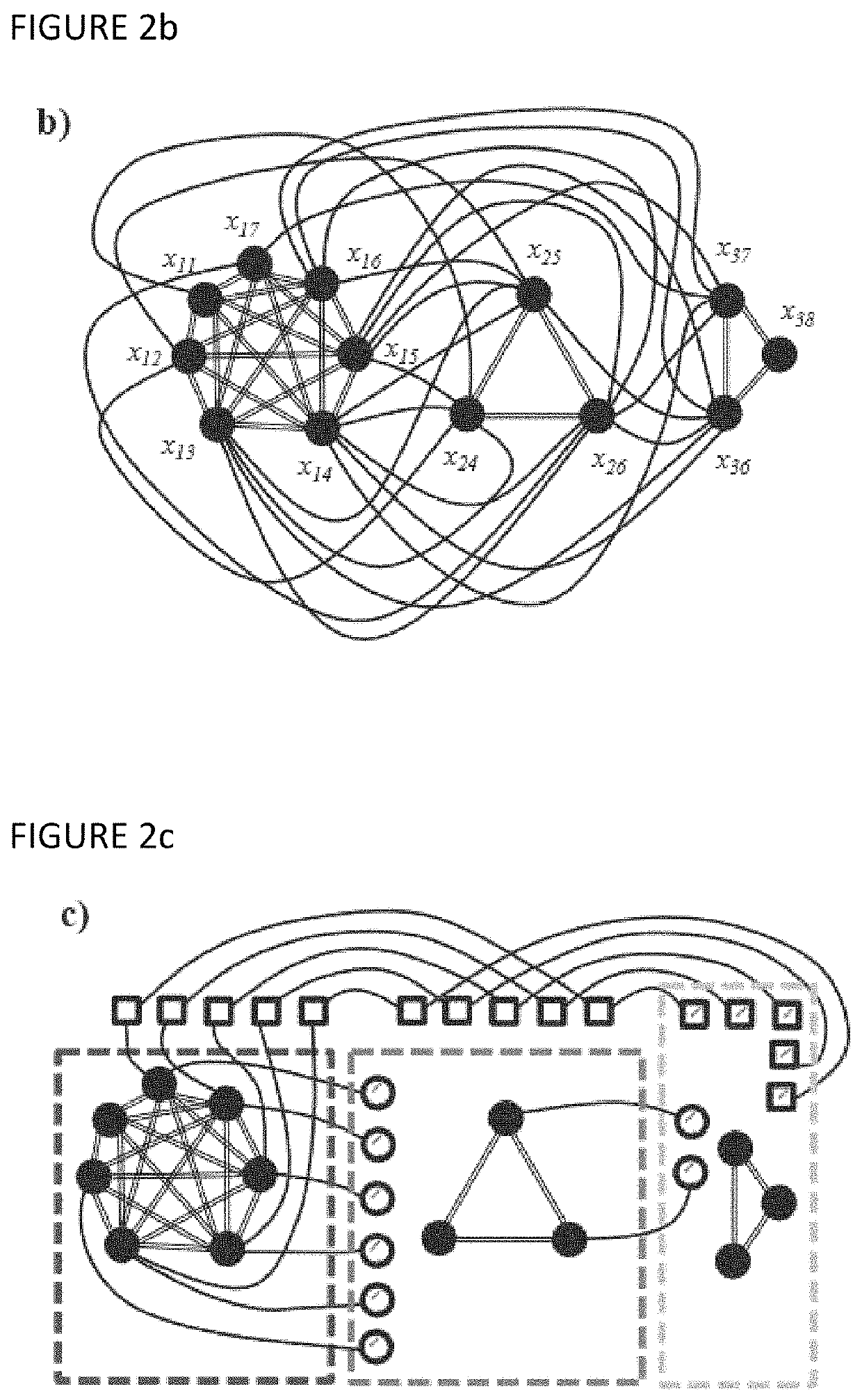System and method to hardcode interger linear optimization problems on physical implementations of the Ising model
a linear optimization and linear optimization technology, applied in the field of methods and systems of analog ising machines, can solve the problems of limited precision, imposing additional limitations, and limiting the application of either problem to be robust, and achieve the effect of higher success ra
- Summary
- Abstract
- Description
- Claims
- Application Information
AI Technical Summary
Benefits of technology
Problems solved by technology
Method used
Image
Examples
Embodiment Construction
[0072]In the following description of the embodiments, references to the accompanying drawings are by way of illustration of an example by which the invention may be practiced.
[0073]I. Introduction
[0074]Instead of trying to identify a ME of in , the ILP can be immediately formulated with a QUBO formula (1) that manifestly guarantees ⊂ and then it can be adaptively modified in order to minimize the overhead. Some of the methods presented have been already applied successfully by the same authors of this invention on a specific problem arising in database research, the index selection problem, which was mapped to a variant of the 0-1 Knapsack problem and was compiled to be executed in the D-Wave 2X physical Ising machine hosted at NASA Ames. Here, those techniques are generalized in a unifying framework which can allow the solving of ILPs which can i) run efficiently in time, ii) can exploit pre-processing over in order to deal with irregularities, and iii) can be applied with profi...
PUM
 Login to View More
Login to View More Abstract
Description
Claims
Application Information
 Login to View More
Login to View More - R&D
- Intellectual Property
- Life Sciences
- Materials
- Tech Scout
- Unparalleled Data Quality
- Higher Quality Content
- 60% Fewer Hallucinations
Browse by: Latest US Patents, China's latest patents, Technical Efficacy Thesaurus, Application Domain, Technology Topic, Popular Technical Reports.
© 2025 PatSnap. All rights reserved.Legal|Privacy policy|Modern Slavery Act Transparency Statement|Sitemap|About US| Contact US: help@patsnap.com



